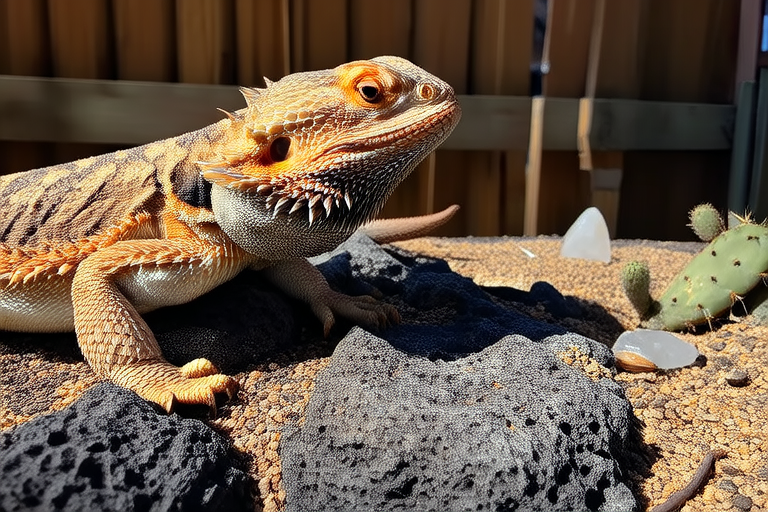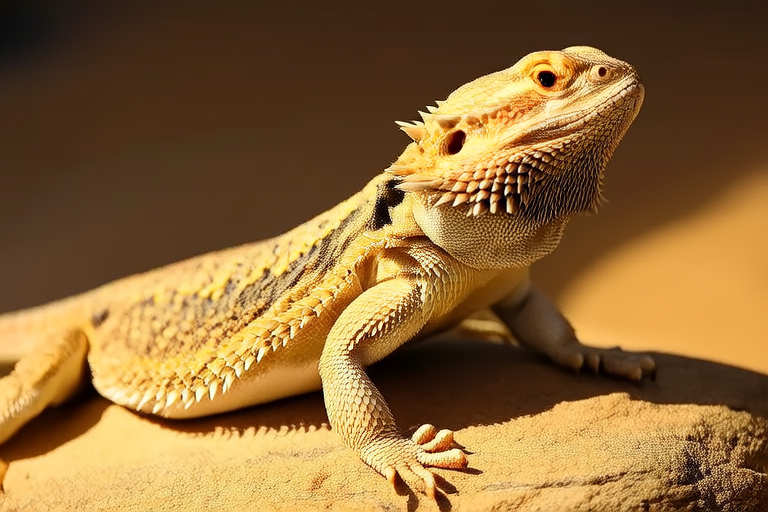
Bearded Dragon Body Language: What Your Pet is Trying to Tell You!
Welcome to the fascinating world of bearded dragons! These charismatic reptiles have become increasingly popular pets due to their docile nature, manageable size, and relatively easy care requirements. Originating from the arid regions of Australia, bearded dragons (Pogona vitticeps) are known for their unique appearance, with their distinctively spiky beards and robust bodies. Their popularity stems from their interactive personalities and the joy they bring to their human companions.
Understanding your bearded dragon’s body language is crucial for ensuring their health and happiness. By learning to read the subtle cues and more pronounced signals, you can better anticipate their needs, maintain their well-being, and build a stronger bond with them. This guide will walk you through the various physical signals that bearded dragons use to communicate, helping you interpret their moods and intentions accurately.
The Importance of Understanding Bearded Dragon Body Language
Just like any other animal, bearded dragons have their own ways of expressing themselves. Recognizing and responding to these signals can significantly enhance your ability to provide appropriate care and ensure your pet’s comfort. A bearded dragon’s body language can indicate whether they’re feeling stressed, content, aggressive, or even sick. Being attentive to these signs allows you to act promptly, which can prevent potential issues and promote a healthier lifestyle for your reptilian friend.
Moreover, understanding your bearded dragon’s body language helps establish trust and mutual respect between you and your pet. When you respond appropriately to their signals, you show them that you’re attentive and responsive to their needs, fostering a deeper connection and creating a more harmonious environment.
Common Physical Signals and Their Meanings
Beard Darkening
One of the most noticeable features of a bearded dragon is its expandable throat pouch, commonly referred to as the ‘beard.’ When this beard darkens, it usually signifies that the dragon is feeling threatened or stressed. This darker coloration serves as a visual deterrent, making the dragon appear larger and more intimidating to potential predators or perceived threats. If you notice your dragon’s beard turning darker, it might be a good idea to give them some space and allow them to calm down.
Puffing
Another defensive mechanism used by bearded dragons is puffing up their bodies. This behavior involves inflating their lungs to increase their overall size, making them look more formidable. Puffing is often accompanied by beard darkening and can occur when the dragon feels cornered or unsafe. It’s important to identify the source of stress and remove it if possible. Providing a secure environment where your dragon can retreat and feel safe is essential for reducing anxiety-related puffing.
Head Bobbing
Head bobbing is a common behavior among male bearded dragons, especially during courtship displays. The head is moved up and down in a rhythmic motion, signaling dominance or readiness to mate. However, head bobbing can also be seen in females, particularly when they are asserting their territory. While this behavior is generally not a cause for concern, it’s worth noting that excessive head bobbing may indicate stress or discomfort. In such cases, it’s advisable to investigate potential triggers and address them accordingly.
Arm Waving
Arm waving is a unique and charming behavior exhibited by bearded dragons, often interpreted as a greeting or a sign of submission. The dragon extends one of its front legs and waves it slowly, sometimes accompanied by a slight bob of the head. This behavior is typically observed in younger dragons or when they’re interacting with larger individuals, indicating a desire to avoid conflict. If your dragon frequently engages in arm waving, it might be a good idea to introduce new stimuli gradually and ensure a balanced environment.
Posture Changes
The way a bearded dragon positions its body can offer valuable insights into its emotional state. For instance, a relaxed dragon will often sit in a flat position with its limbs extended, while a stressed or anxious dragon may tuck its legs closer to its body and flatten itself against the ground. Additionally, dragons that feel threatened might elevate their bodies slightly off the surface, preparing to flee or defend themselves. Observing these posture changes can help you gauge your dragon’s comfort level and make necessary adjustments to their habitat or routine.
Tips for Responding Appropriately to Your Dragon’s Signals
Once you’ve identified the different signals your bearded dragon uses, the next step is to respond appropriately to ensure their well-being. Here are some practical tips to help you strengthen your bond with your pet:
- Provide a Secure Environment: Ensure that your dragon has access to hiding spots and areas where they can retreat when feeling overwhelmed. This can help reduce stress and promote a sense of safety.
- Establish a Routine: Bearded dragons thrive on consistency. Establishing a regular feeding schedule and handling routine can help your dragon feel more at ease and predictable.
- Use Positive Reinforcement: Reward your dragon with treats and praise when they exhibit positive behaviors, such as arm waving or calm demeanor. This can encourage desirable actions and reinforce a trusting relationship.
- Observe and Adapt: Pay close attention to your dragon’s reactions to different stimuli and adjust their environment accordingly. For example, if your dragon shows signs of stress during certain activities, consider modifying the activity or providing additional support.
Observing Patterns in Behavior and Seeking Professional Help
While it’s important to understand individual signals, it’s equally crucial to observe patterns in your dragon’s behavior over time. Consistent changes in mood, appetite, or activity levels could indicate underlying health issues that require professional attention. Regular veterinary check-ups are recommended to ensure your bearded dragon remains healthy and happy.
If you notice persistent signs of distress or illness, don’t hesitate to consult a reptile veterinarian. They can provide expert advice and treatment tailored to your dragon’s specific needs. Remember, early intervention is key to preventing more serious health problems and ensuring a long, fulfilling life for your beloved pet.
In conclusion, mastering the art of reading your bearded dragon’s body language is an invaluable skill for any reptile owner. By paying attention to the various signals your dragon uses and responding appropriately, you can create a nurturing environment that promotes their well-being and strengthens the bond between you. With patience, observation, and care, you’ll be able to communicate effectively with your bearded dragon and enjoy a rewarding companionship.





